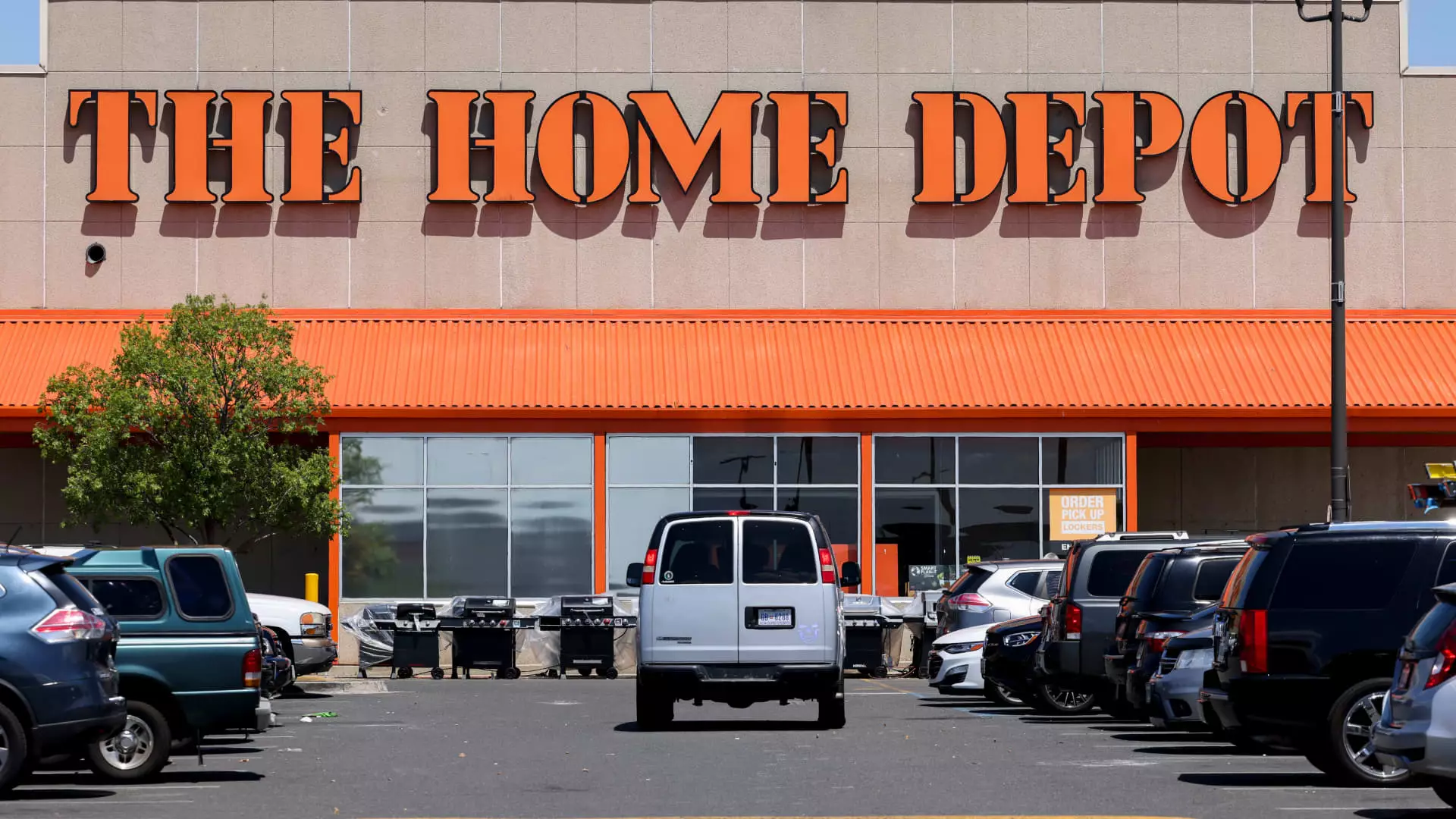Retail Titans: A Critical Look at Home Depot and Best Buy’s Market Positioning

As key players in the retail sector, Home Depot and Best Buy are currently under the intense scrutiny of Wall Street analysts. While Home Depot appears to be in a favorable position with positive projections, Best Buy faces challenges that may hinder its growth in the near term. This article dissects the recent analyses and forecasts for these two retailers, examining their market positions, the external factors affecting their operations, and investor sentiments moving forward.
Recent upgrades from analysts have solidified Home Depot’s stature in the retail market. The Telsey Advisory Group raised its outlook for Home Depot from a hold to a buy-equivalent outperform, adjusting its price target significantly from $360 to $455 per share. This optimistic shift anticipates a nearly 14% increase from the stock’s recent closing price, indicating a robust growth expectation leading into the next fiscal period.
Even though analysts predict “continued softness” in the third quarter sales, they’re bullish on the longer-term potential for Home Depot. Factors such as lower mortgage rates, ongoing hurricane recovery efforts, and a shift in consumer spending post-pandemic are positioned as critical catalysts for growth in 2025. As Home Depot continues to bolster its core business and expand its professional segment—catering to more complex and larger renovation projects—it is set to gain even more market share within the home improvement sector.
The retail giant has already demonstrated strong performance, with its stock climbing nearly 17% this year despite underperforming the S&P 500. However, this year’s performance juxtaposes the benchmark index’s impressive 25% advance, raising questions about investor confidence amid broader market dynamics. The recently adopted dovish monetary policies of the Federal Reserve, including interest rate cuts, may also favor Home Depot, making it an attractive option for new homeowners and contractors reliant on renovation supplies.
The overall economic landscape greatly influences the prospects of major retailers like Home Depot. Analysts from Telsey suggest that economic resilience, coupled with moderating inflation, creates a conducive environment for growth. The recent Federal Reserve rate cuts are anticipated to lower mortgage costs, which could invigorate the housing market—a critical segment for Home Depot.
Conversely, investors are urged to be patient as historical trends suggest a lag period of six to nine months before the housing sector reacts to policy changes. Despite anticipated mediocre quarterly earnings, the market will likely scrutinize not just the figures but, importantly, the forward-looking guidance provided by management.
Investor sentiment, echoed by figures like Jim Cramer, underscores the belief that Home Depot remains a strong investment, notwithstanding immediate performance hiccups. The anticipation surrounding its forthcoming earnings release is palpable, and while cautious optimism prevails, analysts recommend that investors focus on the long-term outlook rather than short-term fluctuations.
In stark contrast, Best Buy is navigating a more turbulent environment. Analysts at Citi recently reduced their price target for Best Buy from $115 to $109 while maintaining a buy rating. They attributed this downgrade to looming concerns over proposed tariffs from the upcoming presidential administration, which pose a significant risk for a retailer heavily reliant on Chinese manufacturing for its inventory.
Despite these headwinds, Citi remains optimistic about the tech-driven consumer cycle, which could provide significant sales opportunities. The ongoing transition to AI-driven technology promises to stimulate demand for devices and gadgets, positioning Best Buy as a potential beneficiary even amidst tariff uncertainties.
The intertwining facets of tariffs and the tech enhancement wave create a complicated landscape for Best Buy. The immediate impact of higher tariffs could suppress profits, yet if the tech replacement cycle accelerates, the retailer could still see vital sales boosts.
Additionally, the delayed responsiveness of the housing market to monetary changes could play in Best Buy’s favor if home sales rebound, eventually propelling sales of appliances and large-ticket items—a staple of Best Buy’s offerings.
The differences in outlook for Home Depot and Best Buy illustrate the complexities of the retail space in a transforming economic climate. While Home Depot emerges as a promising candidate poised for substantial gains, Best Buy’s path is riddled with potential impediments that could stymie growth.
Investors must weigh these distinct narratives carefully. Home Depot’s robust market position, buoyed by favorable economic changes and effective strategic initiatives, contrasts sharply with the headwinds facing Best Buy. In the evolving landscape of consumer goods and retail, both companies will need to adapt to remain relevant and successful amidst fluctuating market conditions and shifting consumer preferences. As these retail giants blaze their respective trails, investor vigilance and strategic foresight will be crucial in determining their financial trajectories.





